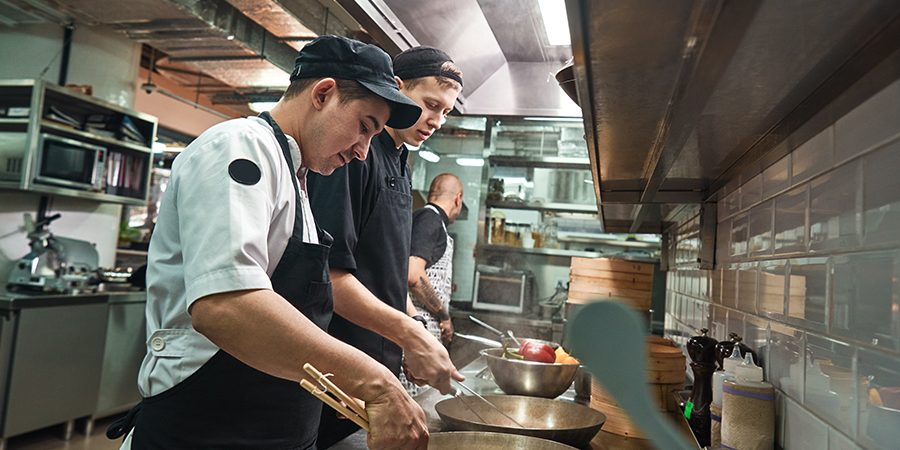Starting a Ghost Kitchen? This is the Tech You Need
Ghost kitchens are a concept with roots in pre-pandemic dining culture and took off exponentially during and after the pandemic. Ghost kitchens go by many names like “dark kitchens” and “virtual kitchens,” but they all have similar hallmarks.
Ghost kitchens are businesses optimized for food prep but that don’t have dining areas, waitstaff, or dedicated parking. Instead, they operate primarily on a delivery-only model facilitated, typically, by a restaurant point of sale (POS) system. This technology hyper-organizes their workflows and integrates with third-party delivery apps to get orders to customers.
Ghost kitchens can be businesses that have pivoted away from traditional restaurant layouts or restaurants that have opened directly under a ghost kitchen model, skipping in-house dining entirely.
Benefits of Ghost Kitchens
A ghost kitchen setup can help business owners meet the quickly changing demands of today’s restaurant patrons in many ways.
Staffing shortages have affected many establishments since the onset of the 2020 pandemic. Even as late as September 2021, nearly 71% of restaurants cite staffing problems as one of the biggest hurdles to their business. Eliminating the need for waitstaff and operating under a ghost kitchen setup can mean having the same number of employees as a pre-pandemic payroll but having the majority of staff focused on prep and cooking. This is a two-fold benefit; having more staff solely focused on cooking can potentially increase the restaurant’s revenue while operating under the same, or reduced, overhead costs.
Additionally, ghost kitchens can operate in smaller facilities than restaurants with in-house dining or customer-facing areas. They may even be able to share spaces with other ghost kitchen businesses, reducing costs and, ultimately, improving the bottom line.
Ghost Kitchen Tech: Cloud-based Restaurant POS Systems
When working at and managing a ghost kitchen you have to have a restaurant POS system that can keep up with your needs. A cloud-based POS system is one of the best ways to help your ghost kitchen business succeed. Going cloud-based means you gain the ability to work with a system tailored for your needs that is accessible anywhere.
Many high-end restaurant POS systems can manage restaurant workflows, run reports and get real-time answers to questions, all from a mobile device. Running a restaurant POS system that can manage multiple locations from one platform gives your business the ability to make agile, data-driven decisions about offerings, time management, and more.
Online Ordering Is a Necessity
Ghost kitchens typically rely on online orders, so the necessity of a great mobile ordering experience cannot be understated. While third-party apps can manage online orders, a modern restaurant POS system should include the functions to take, organize and display online order details.
Ghost kitchens should also allow customers to directly interface with third-party delivery apps like Uber Eats and DoorDash and accept those orders through integration with those platforms. This gives customers their choice of delivery options, ensuring that they’re more likely to order from your restaurant. Not convinced about third-party delivery? In February 2021, 51% of U.S. consumers had ordered food from a third-party delivery service.
Streamlining the ordering process in this fashion also reduces the need for an employee to rekey orders received on a tablet or laptop into the POS system, which can be a time-consuming and error-prone process.
Streamlining Back of the House Operations
Restaurants have the opportunity to adapt their businesses to new consumer preferences post-pandemic. If pivoting to a ghost kitchen model or adding a second revenue stream with a ghost kitchen, they can convert unused dining space into food prep areas and use the space to their advantage. The ghost kitchen model also gives businesses the opportunity to downsize to lower overhead costs.
Besides physical streamlining, one of the most impactful ways to influence back-of-house efficiency is to use a kitchen display system (KDS) that integrates with the POS system and online ordering platform. This integration allows the KDS to display orders directly from the POS system with no staff intervention, allowing employees to concentrate on food preparation.
Another tool for restaurant management is to take advantage of mobile management features in your POS system. This can allow owners and managers to bustle between several different locations as needed, all while being able to run reports and see timely insights on one platform.
Examples could be changing an online menu for several different restaurants at once to reflect seasonal offerings or the most popular menu items for the entire business chain.
You Need an Excellent Cloud-Based Restaurant POS Systems
Ghost kitchens thrive on technology, with heavy reliance on an online system, integrated kitchen display system, and interfacing with third-party delivery applications. Ghost kitchen operators should carefully choose and deploy the best restaurant IT solutions to position their businesses for the greatest chances of success.







